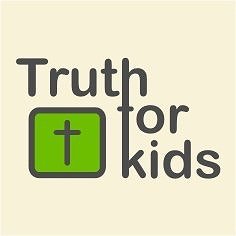Getting started
The Bible is a big book, and we are blessed to have such a collection of inspired writing—the Word of God—literally at our fingertips.
Yet, due to its sheer volume, fine print and writing style, children usually find it difficult to pick up and read a standard version of the Bible.
So how does one explain such a big book to children?—a book that has puzzled the most learned of theologians and Bible scholars. Here are few pointers to help children get started:
Start off withwell-known Bible stories, then gradually include short psalms and passages such as the Beatitudes, the parables, the armor of God etc.
Find a way toapply the Bible to your child’s everyday life. Teach your child as you go about daily activities - Deuteronomy 6:5-9.
Discuss the attitudes and actions that should be evident in our lives. Link examples from Biblical characters to the life encounters of your child, and discuss how we should react in those situations.
Pray that the Holy Spirit will enlighten your child’s heart. The Holy Spirit uses the written Word and transforms it to the living Word in our hearts. He gives children incredible insight because their hearts are so open to spiritual things (Matthew 18:3).
Expand your child’s horizon. Broaden his or her knowledge base by looking up places on maps, explaining big Bible words, and finding relevant pictures. Place the story in context by briefly explaining the events that had led to that point.
Provide variety. Reading the same stories in the same way can lose its effectiveness. Use Bible games; look up cross-references; allow questions; notice detail. Where there is dialogue, assign a character to each one so that different members of the family get a turn to read their part. Scan the reading and look for a name or word that appears numerous times. Then, whenever the name or word is read, your child should clap or make a certain sound. This helps them to keep focused.
Encourage consistency by providing structure—a convenient time and a reading plan.
General comments
It is important for child to have his or her own Bible. A child should be taught that the Word of God is a precious treasure and should be cared for.
A bookmark is a good way to keep the place where the child is reading. Bookmarks with memory verses serve a double purpose. A simple bookmark can be made from cardstock and decorated.
Older children should be encouraged to learn the books of the Bible. Free downloadable craft - Bookmark
The Bible should be read daily—it is our source of spiritual food.
Choosing a suitable Bible
Illustrated Bible story books * Recommended for toddlers and preschoolers.
Selected passages are condensed and retold in a simple storybook format. These illustrated books serve as a good introduction to some of the favorite stories in the Bible. Small children regard their Bible story book as their Bible.
Paraphrases * Great for primary school children.
Paraphrased versions of the Bible are easy to read. Although not technically a translation, a paraphrase conveys the content reasonably accurately. A disadvantage of a paraphrase is when it is used to try and follow a passage being read from a standard translation. An example of a paraphrase is the New Living Bible.
Children’s Bibles (in standard translations) * Suitable for children in middle school through to their early teens.
These are based on common translations, such as the New International Version, and include maps, interesting facts, definitions, devotions etc.
Gospel booklets * Especially suitable for evangelism.
For a child unfamiliar with the Bible, the Gospels are a great place to start. The key doctrines of our faith are interwoven in the narrative of people’s interaction with the Son of God, who came to save us.
Audio Bible (on CD) or free online * Effective for auditory learners
While some children are visual learners, others learn and remember better by listening to someone. These children typically don’t like reading but are quite willing to listen to someone read to them. For such, an audio version of the Bible is ideal, but adult guidance may be necessary to select a certain passage, as well as remove potential distractions while listening.
Bible reading aids (guides)
Unlike an ordinary novel, the Bible is a collection of books—almost like a library. However, the books are not in strict chronological order, and some overlap. It is quite understandable, therefore, that children feel overwhelmed by the volume of text, and confused about how it all fits together. They want to know where to start reading the Bible so that it makes sense.
Children need some form of structure—a plan to follow—and preferably, a simple explanation of what they have read.
Devotions
These refer to a Bible passage and explain, or illustrate by means of a story, what the passage is about. They may include questions, a memory verse, and a practical application.
See I believe - A devotional introducing basic Bible truths to preschoolers and up (online).
See Amazing stories for young believers - through the Bible devotions for 8-12 year olds (downloadable and online).
Even without Bible reading aids, a child can start off by reading one of the Gospels. The Gospel of Mark is the shortest. The Gospel of Luke is more detailed and flows naturally into the book of Acts. Both are written by Luke. The Gospels, and the book of Acts, combine New Testament history with doctrine—spanning the birth of Jesus to the birth of the early church.

